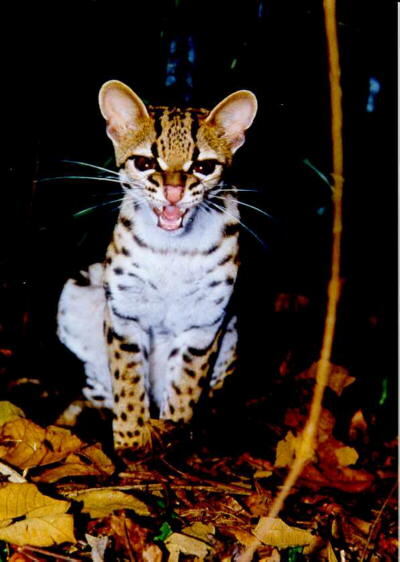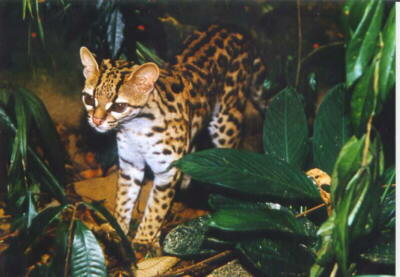This species, also known by the common names margay and tigrillo, inhabits forests northward from Argentina to southern Texas.
One of the margay's distinguishing characteristics is its agility as a climber. It spends much of its time in trees and is seen speeding up and down trunks in the manner of squirrels—that is, head first while descending.
The images of a margay shown here are based on photographs by Glória Jafet, whom I thank for permission to use them. Other fine photography by Mrs. Jafet can be viewed at website of the São Paulo Zoo (link below).



